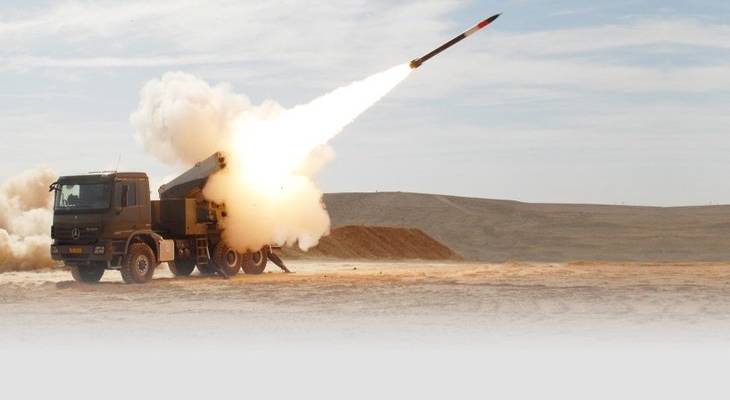IDF’s precision-guided rockets are futuristic weapons for a high-tech battle.
In the dark of night, the IDF recently mounted a battlefield exercise that provided a spectacular display of firepower as a specialized unit launched salvos of precision satellite-guided artillery rockets in a drill to prepare Battalion 334 of the Artillery Corps for future encounters with the enemy.
The battalion was gaining experience with the Romach (Hebrew for “spear”) artillery rocket system made by Israel’s Elbit Systems. Called Accular in English, the system can fire up to 18 122mm rockets a minute each with a range of up to
35km.
Elbit says that Accular “is especially required in areas where the use of traditional artillery is limited by terrain, distance and accuracy.”
The soldiers in the field are training hard to ensure the system will be on target if and when it is needed in combat.
“We practiced a range of attack possibilities, from minimum to maximum range, testing the rocket’s ability and simulating a variety of targets,” the 334th’s commander, Lt. Col. Or Levy, told JNS.
“We are looking to the future, and the Romach is a part of this future,” Levy said.
Romach is super-accurate and can hit a target at a greater distance and greater accuracy than traditional artillery cannons.It’s also able to hit a bullseye within a radius of under 10 meters.
“We understand that at the end of the day, in the next war or day of battle, we will be prepared for all such scenarios. This is what the operational model was made for,” Levy said explaining that Romach could fire a single rocket or launchers could fire dozens if needed.
The 334th wasn’t alone in the drill, needing the radars of the 611 Location Battalion and the Sky Rider drone unit.
“With this synergy, we practiced linking the sensors to the shooters in the best way that this can be done—with radars and with the Sky Rider drone that sees targets. All of these played a part throughout the night,” said Levy.
The 334th shows a new model of fighting developed by the IDF. Traditionally forward spotters needed the air force to locate the enemy targets so the artillery could do their job.
Today, the army uses their own drones, freeing up air force assets for other tasks and reducing the time needed to be effective in the field.
“My job is to bring precise fire to the maneuvering force to the right place and in line with their requirements,” said Levy.
Romach has been in use for the past six years and the IDF is working with Elbit, giving them constructive feedback on how to make Romach more accurate and effective.
Levy stressed that it’s not the hardware, but the soldiers operating the weaponry who make the difference.
“With all our love for technology and the accuracy of the rockets, in the end, there are people who operate this. We have male and female personnel filled with motivation, who came to work. And without their dedicated work, this wouldn’t look the way it does,” Levy said.










